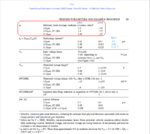ANALA
Member level 1
Sub-threshold slope factor is given by :
[1+ Cd/Cox]
Cd = depletion capacitance
Cox= oxide capacitance
How to calculate the Sub-threshold slope factor for different technology nodes? I m able to substitute for Cox but i don't know how to calculate Cd...i m using the basic inverter circuit
[1+ Cd/Cox]
Cd = depletion capacitance
Cox= oxide capacitance
How to calculate the Sub-threshold slope factor for different technology nodes? I m able to substitute for Cox but i don't know how to calculate Cd...i m using the basic inverter circuit

